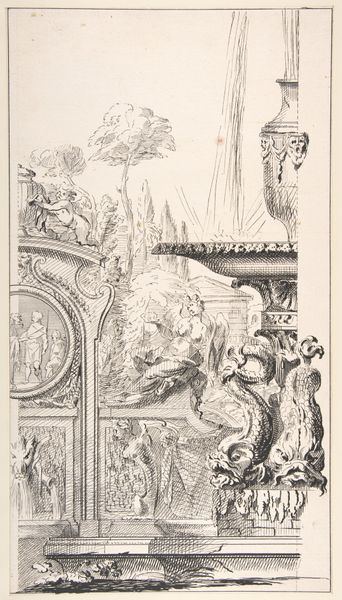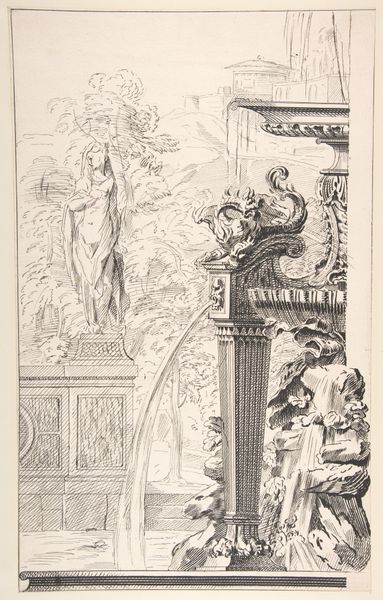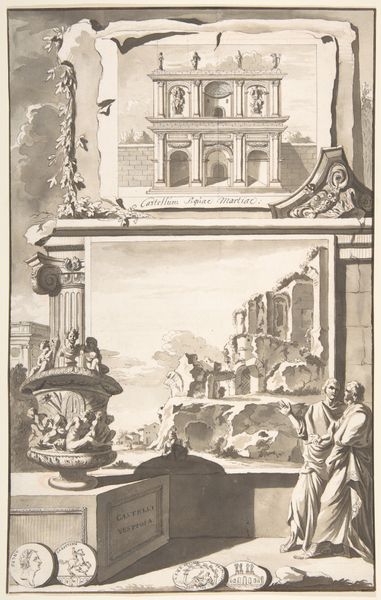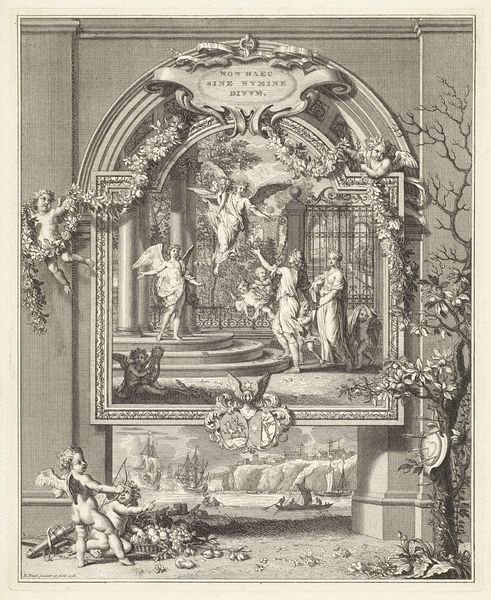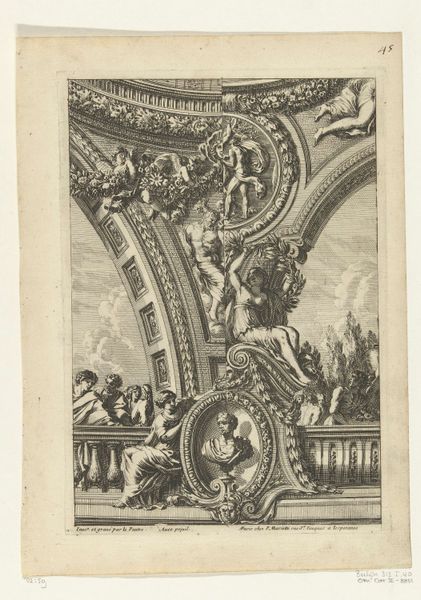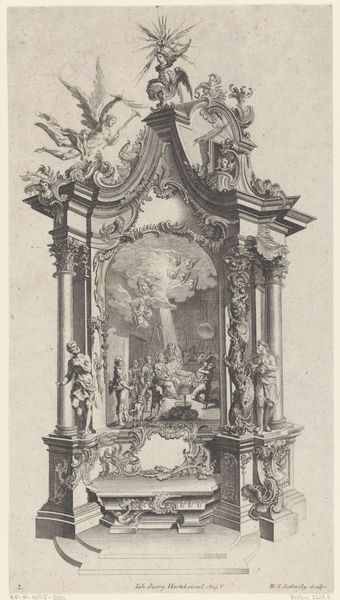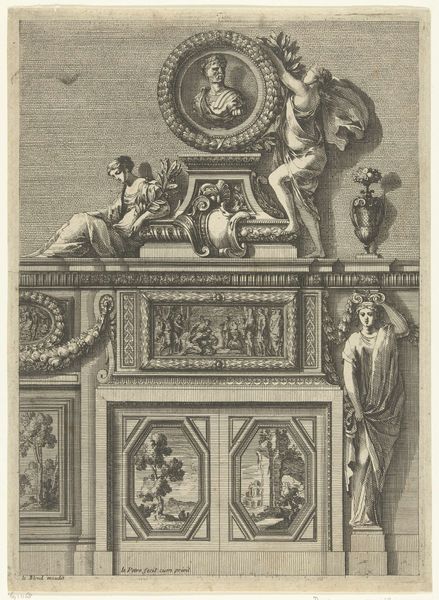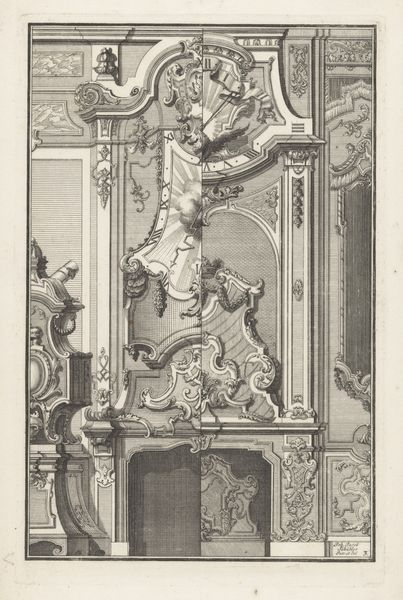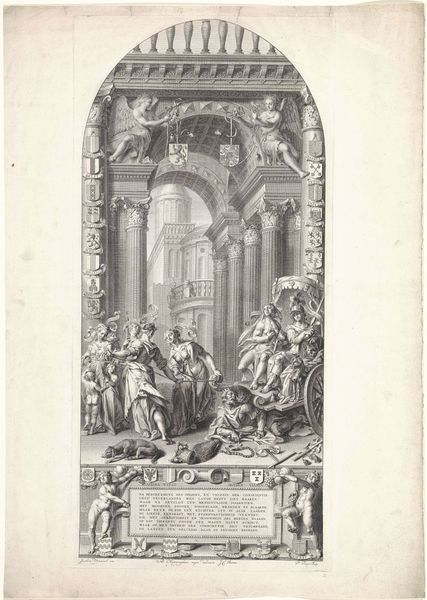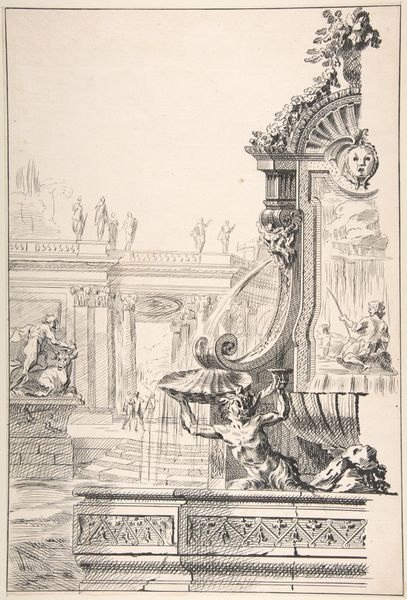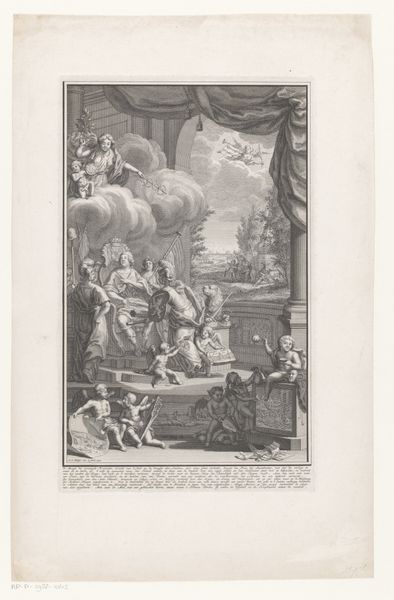
drawing, print
#
drawing
#
garden
#
baroque
# print
#
human-figures
#
landscape
#
figuration
#
human
Dimensions: 17 1/4 x 11 5/8 in. (43.8 x 29.5 cm)
Copyright: Public Domain
Editor: Here we have Gilles-Marie Oppenord's "Study for a Garden Capriccio," dating roughly from 1685 to 1742. It's a drawing or print, currently housed at the Metropolitan Museum of Art. I’m really struck by how intricate it is, and how much depth is conveyed with just lines. What compositional elements stand out to you the most? Curator: I note the deployment of line as the defining characteristic of the overall structural cohesion of the work. The Baroque sensibility for complex form, and its ability to organize myriad visual incidents into unity is particularly apparent. Are you noticing how the implied movement and textural difference works? Editor: Definitely, the contrast between the smooth surfaces and the more textured areas, especially in the rendering of the figures, gives it dynamism. I'm also curious about the figures themselves. Curator: Indeed. How do the relationships between those human forms, the architecture and the water play? What are the vectors guiding the beholder's vision? Editor: Well, the lines of the water seem to draw the eye downwards, while the architectural details pull it back up. It's like a visual push and pull. But, is it simply the forms or what does it symbolize, perhaps? Curator: A symbolic interpretation might provide depth to our insight. I propose, rather, that it's essential to focus first on its form, technique and arrangement within the plane to determine any deeper cultural value. Editor: That’s a perspective I hadn’t considered before. Thank you for focusing me in that new approach of study. Curator: Indeed. The aesthetic construction yields and informs all potential readings of meaning in this highly formalized piece.
Comments
No comments
Be the first to comment and join the conversation on the ultimate creative platform.
